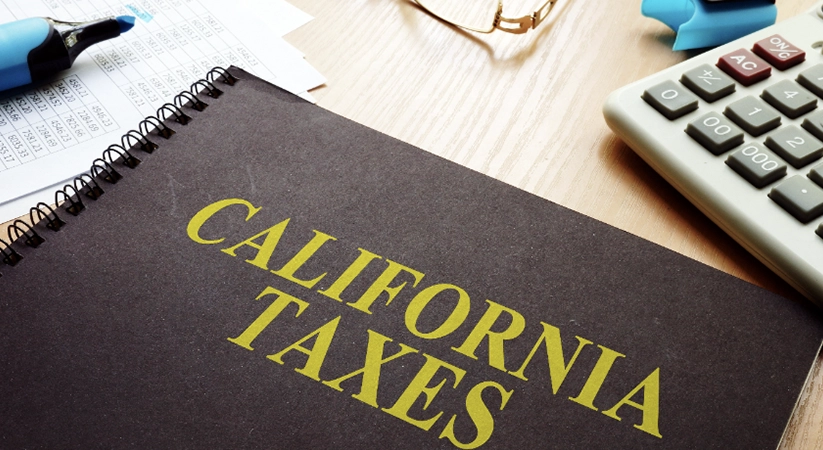What’s The Right Way To Use Tax Form 540, California Resident Income Tax Return
Published:
Look! It’s the tax form all the movie stars use!
What is the IRS 540 Tax Form?
The IRS 540 tax form, also known as California Resident Income Tax Return, is used by individuals in California to report their income taxes. California taxpayers can use this form to report their income, deductions, credits, and other information to the California Franchise Tax Board.
Form 540 is only applicable to California state taxes and should be completed and filed separately from other federal tax forms.
When Do I Need to Use the IRS 540 Tax Form?
As a California resident, it’s important to know when you need to file the IRS 540 tax form. The IRS 540 tax form is used for filing your state income tax return in California.
California residents are required to file a state income tax return if their income exceeds a certain threshold, which varies based on their filing status. It’s important to note that even if you don’t live in California but have income from sources within the state, you may also need to file a California state income tax return using the IRS 540 tax form.
The 540 form is only for your state income tax liability, and should be completed after completing your 1040 form for your federal income tax return. You’ll use other income tax forms for your federal return to complete the field for the California Franchise Tax Board.
To avoid penalties and interest, it’s crucial to meet the filing deadline for the IRS 540 tax form, which is typically April 15th. If you need more time, you can request an extension, but it’s important to make sure you still pay any tax owed by the original filing deadline to avoid late payment penalties.
Filing Status and Qualifying Factors for the IRS 540 Tax Form
Your filing status will determine the tax rate you’ll be subject to, your standard deduction, and any special credits you may be eligible for. Understanding qualifying factors such as your income, dependents, and deductions will also impact your tax return and ultimately, your tax liability or refund.
Who Can File the IRS 540 Tax Form?
The IRS 540 tax form is used to report individual income tax returns in the state of California. A resident is someone who has lived in California for the entire year, while a part-year resident is someone who has lived in California for part of the year.
Non-residents are people who do not live in California but have earned income from sources within the state. Sources of income are also important in determining who should file the IRS 540 tax form. If a taxpayer has taxable income from California sources, they may be required to file a tax return. Qualified retirement plans, accumulation or lump-sum distributions, nonrefundable child tax credits, and earned income tax credits may also affect tax liability and filing requirements.
Qualified Retirement Plan Eligibility Requirements
When it comes to the IRS 540 tax form, one important factor to consider is the eligibility requirements for a qualified retirement plan. A qualified retirement plan is a type of tax-favored retirement plan that meets specific criteria set by the IRS. These plans offer important tax benefits to both employers and employees, including tax-deferred contributions and distributions.
To be eligible for a qualified retirement plan, employees must meet certain requirements such as age and years of service. For example, some plans require an employee to be at least 21 years old and to have worked for the company for a certain number of years. Employers also have their own set of requirements to meet, such as rules on how much they can contribute and how quickly employees can become vested in the plan.
While each plan may have its own unique set of eligibility requirements, the IRS has established certain guidelines for all qualified retirement plans. These guidelines include requirements related to employee participation, annual contribution limits, and benefit limits. In order to receive the tax benefits offered by these plans, it is important to ensure that both employees and employers meet the IRS standards and guidelines.
California Resident Who Works in Different State
If you are a California resident but work in a different state, it is important to understand that you are still required to file a California tax return. This may seem confusing at first, but it is necessary to ensure that you are not taxed twice – once by California and once by the state where you work.
To properly address this situation on IRS Form 540, be sure to attach California Schedule S alongside your tax return. This form is designed specifically for California residents who work in another state, and it will help you determine how much of your income is subject to California state taxes.
When filling out Schedule S, you will need to provide information about your out-of-state income, as well as any taxes that you have already paid on that income to the state where you work.
Once you have completed your tax return, including Schedule S, you can submit it to the California Franchise Tax Board for review. By doing this, you can reduce your California tax liability and avoid being double-taxed.
Part-Year California Resident
If you were a part-year California resident and earned income from California sources or any other state for that matter, you will need to file Form 540NR instead of the standard Form 540.
Before beginning the filing process, be sure to gather all relevant documentation related to your income, such as W-2 forms, 1099 forms, and any other tax documents. You’ll also need to obtain a copy of the Form 540NR booklet, which provides specific instructions for filing as a part-year resident.
When filling out Form 540NR, you’ll need to indicate the period of time that you lived in California as a resident, as well as your income earned during that time. It’s important to accurately report all earnings, as failing to do so could result in penalties or audits.
Additionally, you may need to complete additional schedules and forms, depending on your specific tax situation. Be sure to carefully read through the instructions provided in the Form 540NR booklet to determine which schedules and forms are required.
Finally, don’t forget to include any additional required documents and attachments with your tax return. These may include Schedule CA, which details adjustments made to your income, and Schedule D, which reports your capital gains and losses.
Nonresident Who Worked or Sold Property in California
If you are a nonresident who earned income in California, including selling property, you are required to file a California tax return. To file your return, you must use Form 540NR Short.
When filling out your tax return, it’s important to report all income earned in California, including wages, salaries, tips, commissions, bonuses, and other taxable incomes. Failure to do so can result in penalties or audits.
Completing the IRS 540 Tax Form
Completing the IRS 540 tax form can be a daunting task, especially if you are new to the process or have experienced changes in your income or filing status. This tax form is specifically designed for California residents, and it is used to report all income earned in the state as well as any taxes owed. In this guide, we will walk you through the key steps involved in completing the IRS 540 tax form accurately and efficiently.
Required Documents for Completing your Return
When it comes to completing your IRS 540 Tax Form, gathering the necessary documents is a crucial first step. Without the right paperwork, it can be nearly impossible to accurately file your tax return. To ensure that you have everything you need, here are the required documents for completing your return:
- W-2 Forms – Your employer should provide you with this form, which summarizes your annual earnings and the taxes withheld from your paycheck.
- 1099 Forms – If you earned additional income or received dividends, you may receive a 1099 form. This form reports the amount of money earned and any taxes withheld.
- Records of Tax Payments – If you made any tax payments throughout the year, you’ll need to keep track of these records. This can include estimated tax payments, extension payments, and any other payments made to the IRS.
- Withholding Records – Similar to tax payments, you’ll also need to provide records of any taxes withheld from your paycheck throughout the year.
- Deductions – To claim deductions on your tax return, you’ll need to provide records of these expenses. This can include medical expenses, charitable donations, and other qualified expenses.
By gathering these necessary documents, you’ll be better equipped to accurately complete your IRS 540 Tax Form. Remember to carefully follow the instructions for each section of the form to ensure accuracy and avoid any potential penalties.
Schedule CA
The Schedule CA form is utilized for reporting adjustments to income specific to California. The schedule permits California residents to modify their taxable income or deductions accordingly.To use Schedule CA, enter the amount of the adjustment on line 22 and attach it to your 540 California Resident Income Tax Return.
You must indicate which schedule or form you are using for the adjustment, such as an out-of-state sales tax credit. If you have multiple adjustments that require a Schedule CA, add up all of your adjustments and enter that total on line 22. On each subsequent line, enter the amount of each individual adjustment.
Sources
“Form 540 California Resident Income Tax Return” by FreeLegalForms
“California State Tax Walkthrough” by Rob Phelan



